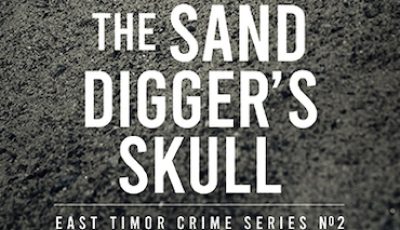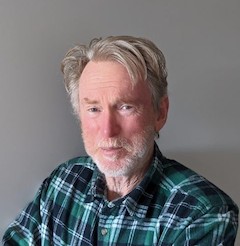

Latest Books The Sand Digger’s Skull by Chris McGillion
 An agnostic Catholic priest and an old woman believed to be a witch are key to FBI Agent Sara Carter (seconded to INTERPOL in East Timor) and her Timorese colleague Vincintino Cordero solving an historic mass murder, a more recent killing, and the death of a village leader who used superstition to cover his greed.
An agnostic Catholic priest and an old woman believed to be a witch are key to FBI Agent Sara Carter (seconded to INTERPOL in East Timor) and her Timorese colleague Vincintino Cordero solving an historic mass murder, a more recent killing, and the death of a village leader who used superstition to cover his greed.
The Sand Digger’s Skull is book 2 in the East Timor Crime Series.
Chris McGillion recently spent some time with The Big Thrill discussing his latest thriller, THE SAND DIGGER’S SKULL.
Can you pinpoint a moment or incident that sparked the idea for this book?
I have visited East Timor each year – covid years aside – and have always been drawn to the richness of the place and its people in terms of location (East Timor constitutes half an island between Indonesia and Australia), history, culture and anthropology. Timor’s struggle for independence following Indonesia’s invasion in 1975 is reasonably well known but the actual character of its people isn’t. I wanted to bring attention to the place in much the same way that Tony Hillerman drew attention to the Navajo Nation in the Jim Chee-Joe Leaphorn series.
A novel is such a major undertaking; there’s the writing of it, of course, then you’re spending months and months revising, polishing, and then promoting it. How did you know this was the book you wanted to spend the next couple of years on?
Well for a start I retired rr5om academic life and needed something to keep my brain ticking over . This book (and the series) is my on-going connection with a country I love to visit, whose people’s struggle (historically and now) I admire, and whose language I have been learning for the past three years.
Were there any particular books, movies, or songs that were knocking around in your head while you were writing this one?
Every novel in Tony Hillerman’s Jim Chee-Joe Leaphorn series set on the Navajo reservation. At last count I think there were 14 he wrote before he died (and – ironically perhaps – his inspiration was in part an Australian author who wrote a series about a part-Australian Aboriginal detective). I began reading Hillerman’s novels as an aide-memoire after visiting the Navajo reservation in the 1980s and have now read each four times over.
When you first created your protagonist for this book, did you see an empty space in crime lit that you wanted to fill? What can you share about the inspiration for that character?
I wanted a strong (American) female lead character but one who carried around, and often acted on, an unresolved personal trauma. That is not particularly original. But I wanted her to be part of a more complicated cast. Due to language difficulties, she is partnered with a male Timorese character who seems self-assured but is also a little lost in his world (having grown up in the West and returning as an adult to East Timor) and a young Timorese policewoman who in many ways represents East Timor itself – struggling with a desire for the modern on the one hand conflicting with residual traditional beliefs and behaviors on the other.
In addition to a great read, what do you hope readers will take away from this story?
The culture clash each of the characters is experiencing to one degree or another seem to me to reflect those all of us in the West are having to deal with given the massive shifts in population in the 21st century. How my characters resolve – or fail to resolve – that clash may be instructive. A more modest ambition is to showcase East Timor as a location, a culture, and a history of struggle against the odds.
What can you share about what you’re working on next?
I have another 4 books in the series to write. That requires several trips back to East Timor to immerse myself in locations and talk to Timorese of all varieties and it also means reading a lot of anthropology about the place. I’m attached to my characters but in two or three years I’ll let them “leave home” and turn my attention to another cast and, maybe, another location such as Papua New Guinea.
Chris McGillion is a former journalist and journalism educator. He is a regular visitor to East Timor where he has been involved in media training initiatives and researching techniques to share agronomic information with remote, low literacy subsistence farmers. He published eight non-fiction books on US-Latin American relations and religious sociology before focusing on crime and mystery thrillers. He lives in the Blue Mountains west of Sydney, Australia.
To learn more about the author and his work, please visit his website.
- LAST GIRL MISSING with K.L. Murphy - July 25, 2024
- CHILD OF DUST with Yigal Zur - July 25, 2024
- THE RAVENWOOD CONSPIRACY with Michael Siverling - July 19, 2024

